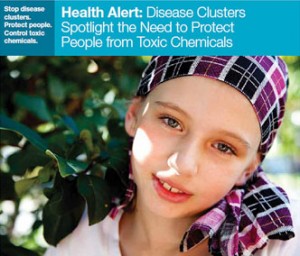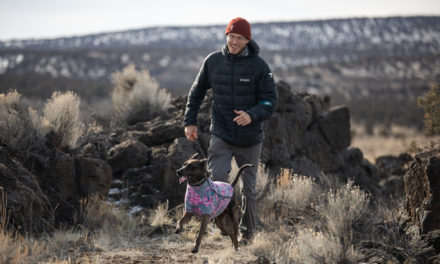- Tahoe’s Nevada Beach Tops the List of Hard-to-Book Campgrounds - 07/17/2024
- Cannabis Watershed Protection Program Cleans Up Illegal Grow Sites - 07/10/2024
- French Fire - 07/05/2024
There are many areas around the U.S. where “disease clusters” have occurred, whereby unusually large numbers of people have gotten sick, usually because of proximity to a polluter. What if anything is being done to remedy the situation?
— Michael Sorenson, Natick, MA
The Natural Resources Defense Council (NRDC) defines a disease cluster as “an unusually large number of people sickened by a disease in a certain place and time.” The organization, along with the National Disease Clusters Alliance (NDCA), reported in March 2011 that it had identified 42 disease clusters throughout 13 U.S. states: Texas, California, Michigan, North Carolina, Pennsylvania, Florida, Ohio, Delaware, Louisiana, Montana, Tennessee, Missouri, and Arkansas, all chosen for analysis, states the report, “based on the occurrence of known clusters in the state, geographic diversity, or community concerns about a disease cluster in their area.”
State and local health departments respond to some 1,000 inquiries per year about suspected disease clusters, though less than 15 percent turn out to be “statistically significant.” Epidemiologists explain that true cancer clusters typically involve one type of disease only, a rare type of cancer, or an illness not usually found in a specific age group.
A classic example of a disease cluster is in Anniston, Alabama, where residents experienced cancerous, non-cancerous, thyroid and neurodevelopment effects that they believe were caused by releases of various chemicals, including PCBs. The culprit: a nearby Monsanto-owned chemical maker, according to NDCA. And, indeed, a 2003 study in and around Anniston by the federal Agency for Toxic Substances and Disease Registry did find that one in five locals had elevated PCB levels in their blood.
Clusters are controversial “in part because our scientific criteria for proving that exposure A caused disease B…are extremely difficult to meet,” says Donna Jackson Nakazawa, author of The Autoimmune Epidemic. “People move, or die, or their disease is never properly diagnosed. How can we prove, with all these variables, that a toxic exposure in an area caused a group of people to fall ill with a specific set of diseases?” Nakazawa is hardly skeptical about the existence of disease clusters. She is part of a growing chorus of voices calling on the government to not only remediate existing sites but to also prevent disease clusters in the first place by developing more stringent standards regarding chemical usage and disposal.
“European environmental policy uses the precautionary principle—an approach to public health that underscores preventing harm to human health before it happens,” Nakazawa reports. In 2007 the European Union implemented legislation that forces companies to develop safety data on 30,000 chemicals over a decade, and places responsibility on the chemical industry to demonstrate the safety of their products. “America lags far behind, without any precautionary guidelines regarding chemical use,” adds Nakazawa.
NRDC says “there is a need for better documentation and investigation of disease clusters to identify and address possible causes.” Armed with better data, advocates for more stringent controls on chemicals could have a better chance of convincing Congress to reform the antiquated Toxic Substances Control Act of 1975 and bring more recent knowledge about chemical exposures to bear in setting safer standards.
CONTACT: NRDC report, www.nrdc.org/health/diseaseclusters/files/diseaseclusters_issuepaper.pdf.
EarthTalk® is written and edited by Roddy Scheer and Doug Moss and is a registered trademark of E – The Environmental Magazine (www.emagazine.com). Send questions to: earthtalk@emagazine.com. Subscribe: www.emagazine.com/subscribe. Free Trial Issue: www.emagazine.com/trial.














